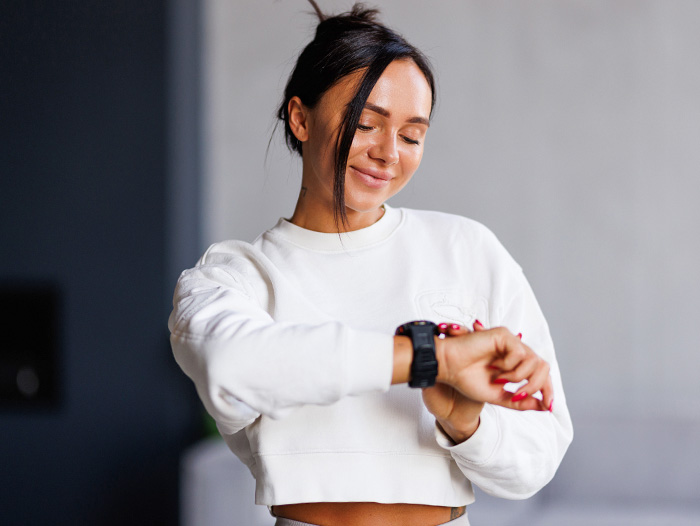Auto logout in seconds.
Continue LogoutFor years, a Minnesota woman's hip pain defied explanation — until doctors uncovered a rare spinal malformation silently pressing into her brain stem, Rachel Zimmerman reports for the Washington Post.
Symptoms
Lauren Casey, then 15, was a tenor sax player in her Minnesota high school marching band when the pain in her hip and lower back first became severe. It hurt when she walked and when she stood for hours at her fast-food job. Soon, she began feeling like her ribs were popping out of place.
Casey thought maybe carrying around her 10-pound instrument, much of its weight on her neck, was the problem. "It was heavy for someone tiny," she said.
Casey's parents took her to a string of doctors during her teenage years — internists, an osteopath, a physical therapist — but none could figure out what ailed her. One said her problem was a "twisted pelvis." Another, she said, suggested "it was just in my head… It was doctor after doctor shutting me down," said Casey, now 24.
In college, Casey sought alternative treatments, including one focused on manipulating her musculoskeletal system, but she said the pain always returned. After more than eight years of seeking help from several medical professionals who failed to identify what was wrong with her, she essentially gave up. Casey concentrated on her studies and decided to "tough out" the near-constant pain.
"The pain definitely slowed me down and made things hard to enjoy," Casey said. "But I kept pushing through it."
Soon, Casey's family moved to the Chicago area, and her father urged her to try a new physician. She made an appointment with a chiropractor who ordered X-rays and an MRI of her entire spine and neck — something no previous doctor had requested. What appeared on those images was so unusual that the chiropractor quickly referred Casey to a neurosurgeon. That, she said, began the fraught path to solving her years-long pain.
"I lived for 22 years not knowing what this was," she said. "But I'm glad someone found out what was wrong … I just didn't realize it would be such a big deal."
"She was one hit, one cough away from being a paraplegic."
Diagnosis
In 2023, Casey visited Hailey Spencley, a chiropractor at Aligned Modern Health in Kildeer, Illinois, who ordered images of Casey's entire spine. Suddenly, the abnormalities in her upper cervical spine and the base of her skull were clear.
"I'd never seen this in a patient before," Spencley said. "I had her come in so we could go over the results and get her the care she needed."
In October 2023, Casey met with Russ Nockels, a neurosurgeon and chief of spine surgery at Endeavor Health Northwest Community Hospital in Arlington Heights, Illinois. Nockels explained that Casey's pain was the result of a rare, congenital condition called basilar invagination.
During fetal development, a bony knob called the dens, or odontoid peg, is supposed to form squarely atop the spine to provide stability for the neck and head — a little like "a lollipop on a stick," according to another neurosurgeon who worked on the case. For Casey, that peg ended up pressing backward into the base of her skull and, over time, began to impale her brain stem. When neurosurgeons got involved, Casey's spinal cord had compressed by about 50%.
"The whole stability system failed," Nockels said, estimating that Casey's condition only impacts around one to two people per million worldwide. "It was really bad." So bad, he told Casey, that a simple fall or short stop in a car could have been fatal. Sammy Khalili, the head and neck surgeon on Casey's care team at Endeavor Health, added, "She was one hit, one cough away from being a paraplegic."
RELATED resources
Casey's doctors developed a plan: Create a slot at the bottom of her skull, and instead of taking out the peg, move it forward into the slot. This allowed them to dis-impale her spinal cord and brain stem, then, with X-ray guidance, the doctors could slowly let her head extend and tilt backward to its natural position.
In January 2024, Casey underwent the first of her multistage operations. Kassan said that to his knowledge, Casey was "the first person to undergo this procedure," in which the head was returned to its correct position without removing the odontoid peg.
Casey endured an arduous recovery. The halo remained on for about a month, then she wore a series of hard and soft collars around her neck. At first, she had to sleep sitting up in a chair. Swallowing was difficult, and she required help from her parents.
"There was lots and lots of soup," Casey said. Now, her hip pain is gone, and she has started walking regularly. She took a vacation to Las Vegas this summer and said she was amazed by "seven straight days of no pain."
Now, she can do what she wants, so long as it's not jet-skiing or another similarly intense activity. "I'm lucky it turned out the way it did," she said. "... I feel like I can live my life."
(Zimmerman, Washington Post, 10/4)
Don't miss out on the latest Advisory Board insights
Create your free account to access 1 resource, including the latest research and webinars.
Want access without creating an account?
You have 1 free members-only resource remaining this month.
1 free members-only resources remaining
1 free members-only resources remaining
You've reached your limit of free insights
Become a member to access all of Advisory Board's resources, events, and experts
Never miss out on the latest innovative health care content tailored to you.
Benefits include:
You've reached your limit of free insights
Become a member to access all of Advisory Board's resources, events, and experts
Never miss out on the latest innovative health care content tailored to you.
Benefits include:
This content is available through your Curated Research partnership with Advisory Board. Click on ‘view this resource’ to read the full piece
Email ask@advisory.com to learn more
Click on ‘Become a Member’ to learn about the benefits of a Full-Access partnership with Advisory Board
Never miss out on the latest innovative health care content tailored to you.
Benefits Include:
This is for members only. Learn more.
Click on ‘Become a Member’ to learn about the benefits of a Full-Access partnership with Advisory Board
Never miss out on the latest innovative health care content tailored to you.

